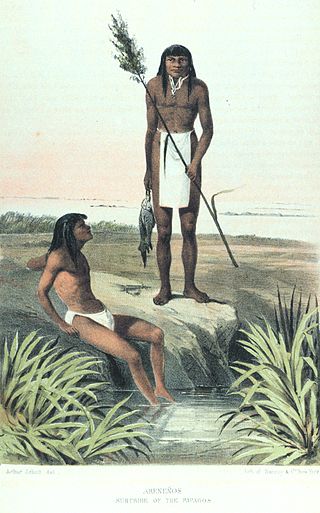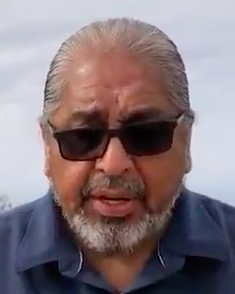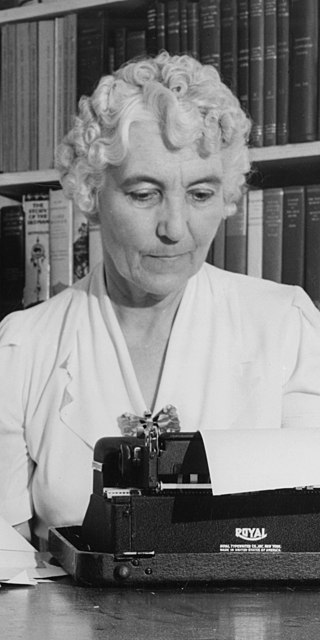Related Research Articles

The Tohono Oʼodham are a Native American people of the Sonoran Desert, residing primarily in the U.S. state of Arizona and the northern Mexican state of Sonora. The United States federally recognized tribe is the Tohono Oʼodham Nation.

The Yaqui, Hiaki, or Yoeme, are an Indigenous people of Mexico and Native American tribe, who speak the Yaqui language, a Uto-Aztecan language.
Indigenous peoples of Arizona are the Native American people who currently live or have historically lived in what is now the state of Arizona. There are 22 federally recognized tribes in Arizona, including 17 with reservations that lie entirely within its borders. Reservations make up over a quarter of the state's land area. Arizona has the third largest Native American population of any U.S. state.
The O'odham,Upper Oʼodham, or Upper Pima are a group of Native American peoples including the Akimel O'odham, the Tohono Oʼodham, and the Hia C-eḍ Oʼodham. Their historical territory is in the Sonoran desert in southern and central Arizona and northern Sonora, and they are united by a common heritage language, the O'odham language. Today, many O'odham live in the Tohono O'odham Nation, the San Xavier Indian Reservation, the Gila River Indian Community, the Salt River Pima-Maricopa Indian Community, the Ak-Chin Indian Community or off-reservation in one of the cities or towns of Arizona.

The Pascua Yaqui Tribe of Arizona is a federally recognized tribe of Yaqui Native Americans in the state of Arizona.
Grenville Goodwin, born Greenville Goodwin (1907–1940), is best known for his participant-observer ethnology work among the Western Apache in the 1930s in the American Southwest. Largely self-taught as an anthropologist, he lived among the Apache for nearly a decade, and learned their stories and rituals. His monograph The Social Organization of the Western Apache was considered a major contribution to American ethnology. It was published in 1941 after his death at age 32, when his promising career was cut short.
Ofelia Zepeda is a Tohono O'odham poet and intellectual. She is Regents' Professor of Tohono O'odham language and linguistics and Director of the American Indian Language Development Institute (AILDI) at The University of Arizona. Zepeda is the editor for Sun Tracks, a series of books that focuses on the work of Native American artists and writers, published by the University of Arizona Press.

The Hia C-eḍ Oʼodham, also known as Areneños or Sand Papagos, are a Native American peoples whose traditional homeland lies between the Ajo Range, the Gila River, the Colorado River, and the Gulf of California. They are currently unrecognized at both the state and federal level in the United States and Mexico, although the Tohono Oʼodham Nation has a committee for issues related to them and has land held in trust for them. They are represented by a community organization known as the Hia-Ced Oʼodham Alliance. The Hia C-eḍ Oʼodham are no longer nomadic, and the majority today live in or near Ajo, Arizona, or the small settlements of Blaisdell and Dome near Yuma.

The Tohono Oʼodham Nation is the collective government body of the Tohono Oʼodham tribe in the United States. The Tohono Oʼodham Nation governs four separate sections of land with a combined area of 2.8 million acres (11,330 km2), approximately the size of Connecticut and the second largest Indigenous land holding in the United States. These lands are located within the Sonoran Desert of south central Arizona and border the Mexico–United States border for 74 miles (119 km) along its southern border. The Nation is organized into 11 local districts and employs a tripartite system of government. Sells is the Nation's largest community and functions as its capital. The Nation has approximately 34,000 enrolled members, the majority of whom live off of the reservations.
Robert A. Williams Jr. is an American lawyer, author, and legal scholar. He works in the fields of federal Indian law, international law, indigenous peoples' rights, critical race and post-colonial theory. Williams teaches at the University of Arizona's James E. Rogers College of Law, serving as Regents Professor, E. Thomas Sullivan Professor of Law and Faculty Chair of the Indigenous Peoples Law and Policy Program.
Frances Jane Hassler Hill was an American anthropologist and linguist who worked extensively with Native American languages of the Uto-Aztecan language family and anthropological linguistics of North American communities.
Edward Holland Spicer (1906–1983) was an American anthropologist who combined the four-field approach outlined by Franz Boas and trained in the structural-function approach of Radcliffe-Brown and the University of Chicago. He joined the anthropology faculty at the University of Arizona in 1946 and retired from teaching in 1976. Spicer contributed to all four fields of anthropology through his study of the American Indians, the Southwest, and the clash of cultures defined in his award-winning book, Cycles of Conquest. Spicer combined the elements of historical, structural, and functional analysis to address the question of socio-cultural change. He was a teacher, researcher, editor, and practitioner, who applied his perspective to address the issues confronting the people he worked with.

Ned Norris Jr. is chairman of the Tohono O'odham Nation of southern Arizona. He previously held the office for two consecutive terms from 2007 to 2015, and was returned to the office in 2019. Norris previously worked as the director of marketing and public relations for the O'odham Gaming Authority.
Vivian Juan-Saunders is an American politician who became the first woman to lead the Tohono O'odham Nation of southern Arizona in 2003. She served as Chairwoman of the Tohono O'odham from 2003 until 2007.

Ruth Murray Underhill was an American anthropologist. She was born in Ossining-on-the-Hudson, New York, and attended Vassar College, graduating in 1905 with a degree in Language and Literature. In 1907, she graduated from the London School of Economics and began travelling throughout Europe. During World War I, she worked for an Italian orphanage run by the Red Cross.
Juan Dolores, was a Tohono O'odham Native American of the Koló:di dialect, acting as one of the first linguists of the O'odham language. He is the first person to document traditional Tohono O'odham fables and myths, and worked with Alfred L. Kroeber to document the first studies into the O'odham language's grammar, which would eventually be compiled and published alongside other documents in The Language of the Papago of Arizona by John Alden Mason.
Several Indigenous peoples who live on the United States–Mexico border have objected to the construction of a border wall on their territories and the militarization of the border by the United States government. The US–Mexico border crosses several Indigenous territories and divides these communities. The barrier erected between the United States and Mexico cuts through and/or affects at least 29 Indigenous tribes, which include Kumeyaay Nation and Tohono O'odham.
Maria Chona (1845-1936) was a native American weaver and participant in anthropological research.
Muriel Thayer Painter was an American anthropologist and social worker who researched and advocated for the Yaqui. Her anthropology research focused on the Yaqui Easter ceremony.
Thamar Richey was an educator, known for her work with the Yaqui community in Arizona.
References
- 1 2 3 4 5 "Collection:Selections of Rosamond Spicer's Tohono O'odham Photographs". Arizona State Museum. Retrieved 7 April 2016.
- 1 2 3 4 5 Spicer 2011, pp. 26–27.
- ↑ "Edward H. and Rosamond B. Spicer Foundation". Arizona School of Anthropology, University of Arizona. Retrieved 7 April 2016.
- 1 2 "Edward Holland Spicer" (PDF). N a t i o n a l Ac a d e m y o f S c i e n c e s. Retrieved 7 April 2016.
- ↑ Spicer 2011, pp. 27–28.
- ↑ Spicer 2011, p. 13.
- ↑ Spicer 2011, p. 20.
- ↑ Hayashi 2004, p. 298.
- Bibliography
- Spicer, Edward H. (1 April 2011). People of Pascua. University of Arizona Press. ISBN 978-0-8165-2967-4.
- Hayashi, Brian Masaru (2004). Democratizing the Enemy: The Japanese American Internment. Princeton University Press. ISBN 0-691-00945-7.